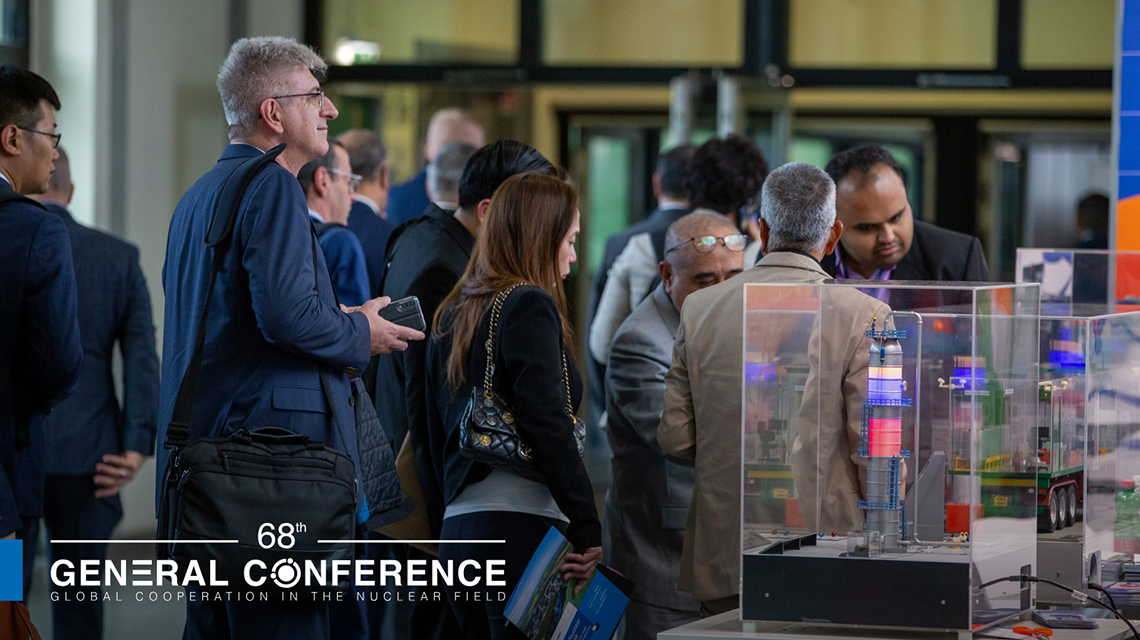Advances in Nuclear Technology Developments for Microreactors
During a notable side event titled The SMR Platform: Advances in Nuclear Technology Developments for Microreactors, significant progress in the development of microreactors was discussed. These discussions also delved into security considerations and the ‘safeguards by design’ methodology. Additionally, the International Atomic Energy Agency (IAEA) unveiled its newly revamped Advanced Reactor Information System (ARIS). ARIS serves as an extensive repository of the latest information on advanced nuclear plant designs and concepts, providing a pivotal resource for industry stakeholders.
Microreactors, typically designed to generate a maximum of 20 megawatts of electric power (MW(e)), have emerged as a promising solution for the electricity demands of remote communities. Beyond their capacity to supply power to isolated areas, these reactors are also being considered for non-electric applications such as desalination and chemical production. Their compact size and low power output make them suitable for regions where traditional large-scale nuclear reactors are not feasible.
Safety Standards for Advanced Nuclear Power Plants
The IAEA also presented its decade-long vision to update safety standards for advanced nuclear power plants (NPPs) during another side event titled Safety of Advanced Nuclear Power Plant Designs: Enabling the Future. This vision is anchored in the insights provided by IAEA Safety Report No. 123, which examines the relevance of existing safety standards to non-water-cooled reactors and small modular reactors (SMRs). The report’s findings are critical for ensuring that the evolving landscape of nuclear technology continues to adhere to rigorous safety protocols.
Enhancing Reporting Efficiency with the State Declarations Portal
In another insightful event, The Declaration of the Arab Roadmap for Cooperation in Radiological and Nuclear Emergency Preparedness and Response, the State Declarations Portal (SDP) was highlighted. This portal leverages technology to streamline Member States’ reporting responsibilities. By minimizing reliance on paper-based processes and bolstering institutional memory, the SDP has markedly enhanced the efficiency and security of safeguards-related information exchange with the IAEA. This innovation is a significant step forward in ensuring that Member States can meet their reporting obligations more effectively and securely.
Managing Legacy Radioactive Waste
At the event focused on Addressing Challenges in Managing Legacy Radioactive Waste, representatives from Georgia, the Republic of Moldova, and Ukraine shared outcomes of successful IAEA technical cooperation projects. These projects were aimed at analyzing, transferring, and storing radioactive waste resulting from historical nuclear activities. The shared experiences underscore the importance of international collaboration in managing the complex issue of legacy radioactive waste, ensuring environmental safety, and protecting public health.
Powering the Future through Atoms4NetZero
The event Powering the Future through Atoms4NetZero underscored the significance of energy scenario modelling for devising long-term energy strategies. It also highlighted how the IAEA’s Atoms4NetZero initiative can assist countries in achieving their net zero carbon emissions targets through the utilization of nuclear power. This initiative is pivotal in the global effort to combat climate change by providing a reliable and sustainable energy source that can complement other renewable energy technologies.
Forging the Future Safeguards Workforce
At the event Safeguards Traineeships: Forging the Future Safeguards Workforce, delegates were briefed on the successes of the Safeguards Traineeship Programme and introduced to the new IAEA TechTrack initiative for young professionals. Since its inception in 1983, the Safeguards Traineeship Programme has been instrumental in providing young individuals with hands-on experience in IAEA safeguards. To date, 185 trainees from 77 countries have benefited from this program. The initiative particularly targets participants from states with limited nuclear fuel cycles and those that receive IAEA technical assistance, helping to build a knowledgeable and skilled workforce for the future.
Conclusion
These events highlight the IAEA’s commitment to advancing nuclear technology, enhancing safety standards, improving reporting efficiency, managing radioactive waste, and supporting the global transition to net zero carbon emissions. By fostering international cooperation and providing vital resources and training, the IAEA continues to play a crucial role in the safe and sustainable development of nuclear energy. For more detailed information, please refer to the original IAEA blog.
For more Information, Refer to this article.


































